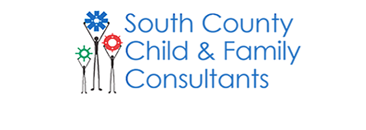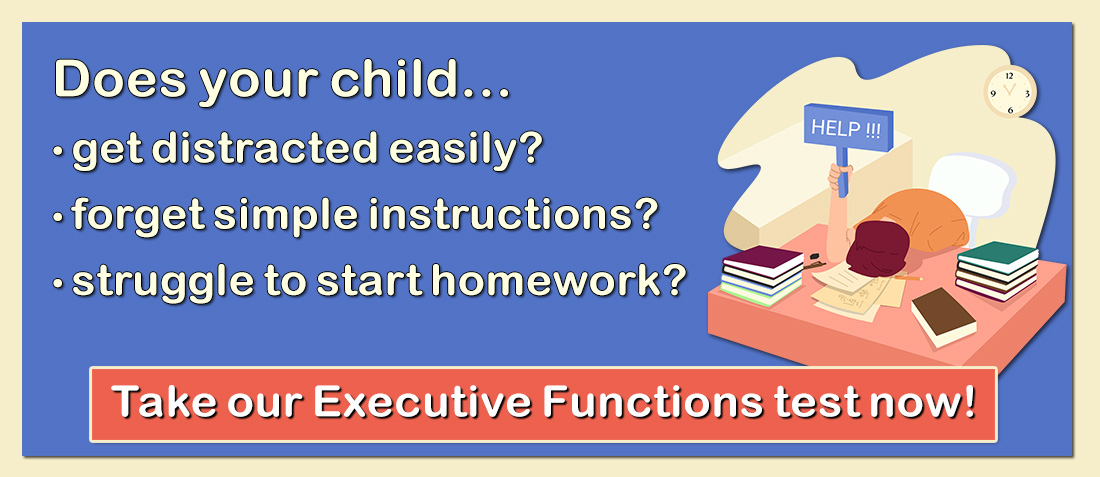Autism is being diagnosed more frequently than ever before. In 2000, autism rates were 1 in every 150 children. Currently, in 2022, the rates are now 1 in 44 children. This increase is primarily due to increasing awareness of the disorder and to new diagnostic criteria that were introduced in the Diagnostic and Statistical Manual of Mental Disorders, Fifth Edition (DSM-V) in 2014. The new criteria are broader in nature and also allow for a co-occurring diagnosis of ADHD along with Autism. There are now 3 levels of Autism that can be diagnosed-.Level 1 High functioning- needing some support and often capable of regular education and age-appropriate peer activities, Level 2 -requiring substantial support and significant challenges in daily routines, and Level 3 – requiring very substantial support with marked language, social, self-care, and behavioral challenges. As a result, many more kids are being labeled with the Autism diagnosis and may be confused by what it means. Many Level 1, High functioning children with Autism, are aware and curious about their diagnosis.
Compiled below are resources for children with Autism Spectrum Disorder (ASD) that will help them to understand what makes them different. These books support the development of children with ASD and will challenge them in ways that are meaningful to them. Many of these books are also beneficial to children who have siblings with ASD, and will help them to better understand their sibling and their challenges. Many of the novels focus on helping children navigate social situations and learning environments, and present exercises to help with communication, even for nonverbal children with ASD.
Uniquely Wired: A Story About Autism and Its Gifts
By Julia Cook and Anita DuFalla
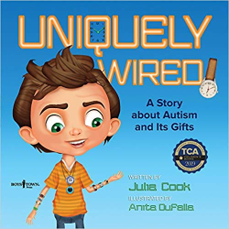 Amazon Review: This touching story helps others understand autism, as well as some of the unique behaviors or unconventional responses of kids with autism. Instead of depicting autism as a disadvantage, Cook portrays Zak as having many gifts to share due to his uniquely wired brain. Zak has many features that are typical of people with autism, including avoiding eye contact, rapid body movements, an incredible memory, deep passions (trains, watches), and a tendency to repeat phrases. The people in his life, from siblings to teachers, support him and thank him for the patience he teaches them. In creating a positive context around autism and highlighting Zak s similarities and differences, neurotypical students can gain a new perspective. DuFalla s bright cartoon pictures match the upbeat tone of the text and will engage readers. A list of tips for understanding children who are uniquely wired is also included. VERDICT A helpful tool for teachers and parents to help foster empathy and understanding among students.
Amazon Review: This touching story helps others understand autism, as well as some of the unique behaviors or unconventional responses of kids with autism. Instead of depicting autism as a disadvantage, Cook portrays Zak as having many gifts to share due to his uniquely wired brain. Zak has many features that are typical of people with autism, including avoiding eye contact, rapid body movements, an incredible memory, deep passions (trains, watches), and a tendency to repeat phrases. The people in his life, from siblings to teachers, support him and thank him for the patience he teaches them. In creating a positive context around autism and highlighting Zak s similarities and differences, neurotypical students can gain a new perspective. DuFalla s bright cartoon pictures match the upbeat tone of the text and will engage readers. A list of tips for understanding children who are uniquely wired is also included. VERDICT A helpful tool for teachers and parents to help foster empathy and understanding among students.
I See Things Differently: A First Look at Autism (A First Look At…Series)
By Pat Thomas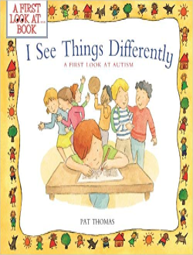
Amazon Review: Psychotherapist and counselor Pat Thomas puts her gentle, yet straightforward approach to work in this new addition to B.E.S. highly acclaimed A First Look At…Series. This book will help children understand what autism is and how it affects someone who has it. A wonderful catalyst for discussion that will help children to better understand and support autistic classmates or siblings. The story line is simple and easily accessible to younger children, who will learn that exploring the personal feelings around social issues is a first step in dealing with them. Full-color illustrations on every page.
Social Skills Handbook for Autism: Activities to Help Kids Learn Social Skills and Make Friends
By Catherine Pascuas and Robert Jason Grant
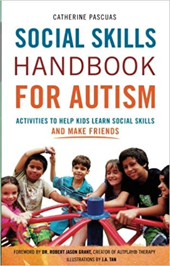 Amazon Review: More than 50 fun and simple games and activities help the child on the spectrum: -make friends and be part of a group; -interact with peers and develop social skills needed for playdates; -problem solve, express feelings, and answer questions; -deal with bullies, peer pressure, and manage stress; -speak over the phone, send text messages, and share stories. Use the activities in this social skills book to teach school-age children with autism spectrum disorders or Aspergers. Whether you’re a parent, special education teacher, or professional, you’ll find ideas to help children develop the social skills they need to thrive at home, at school, and in the community. Featuring illustrations by J.A. Tan, an artist on the autism spectrum.
Amazon Review: More than 50 fun and simple games and activities help the child on the spectrum: -make friends and be part of a group; -interact with peers and develop social skills needed for playdates; -problem solve, express feelings, and answer questions; -deal with bullies, peer pressure, and manage stress; -speak over the phone, send text messages, and share stories. Use the activities in this social skills book to teach school-age children with autism spectrum disorders or Aspergers. Whether you’re a parent, special education teacher, or professional, you’ll find ideas to help children develop the social skills they need to thrive at home, at school, and in the community. Featuring illustrations by J.A. Tan, an artist on the autism spectrum.
101 Games and Activities for Children With Autism, Asperger’s and Sensory Processing Disorders
By Tara Delaney
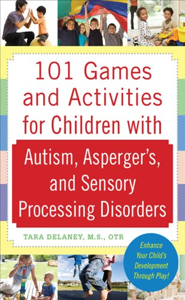 Amazon Review: One of the best ways for children with autism, Asperger’s, and sensory processing disorders to learn is through play. Children improve their motor skills, language skills, and social skills by moving their bodies and interacting with their environment. Yet the biggest challenges parents, teachers, and loved ones face with children on the autism spectrum or with sensory processing disorders is how to successfully engage them in play.
Amazon Review: One of the best ways for children with autism, Asperger’s, and sensory processing disorders to learn is through play. Children improve their motor skills, language skills, and social skills by moving their bodies and interacting with their environment. Yet the biggest challenges parents, teachers, and loved ones face with children on the autism spectrum or with sensory processing disorders is how to successfully engage them in play.
Pediatric occupational therapist Tara Delaney provides the answer. In 101 Games and Activities for Children with Autism, Asperger’s, and Sensory Processing Disorders, she shows you how to teach your children by moving their bodies through play. These interactive games are quick to learn but will provide hours of fun and learning for your child. And many of the games can be played indoors or outdoors, so your child can enjoy them at home, outside, or on field trips.
More than one hundred games that help your child:
- make eye-contact, stay focused, and strengthen his or her motor skills
- associate words with objects and improve language and numerical skills
- learn how to interact with others, how to take turns, and other social skills needed for attending preschool and school
Nathan’s Autism Spectrum Superpowers (One Three Nine Inspired)
By Lori Leigh Yarborough and Natalie Merheb
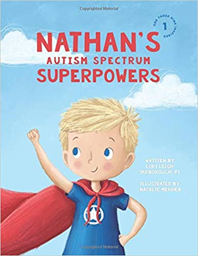 Amazon Review: The superhero of this book, Nathan, explains about his Autism Spectrum Superpowers, how they affect him, and ways his friends can help out when his superpowers spiral out of control. This book is a tool to help children and their friends, families and caregivers understand kids with superpowers. All children need to know they’re wanted, loved and special. All children need to know they have superpowers. And all children especially need to know they’re wonderfully made. The author, Lori Leigh Yarborough, is a physical therapist and graduate from the University of Oklahoma Health Sciences Center. She makes her home in Texas with her husband and their four children. Her second son, Nathan, was diagnosed on the Autism Spectrum with Aspergers when he was little. She came up with a creative way to explain to Nathan why he didn’t respond to things like other kids did. After she told Nathan about his “Supersonic Hearing” he was so excited to finally understand in a way that made sense why things were so loud and overwhelming to him. He wanted to know ALL his superpowers. So she wrote this book for him. Each superpower has a “helpful hints for friends” section that was originally written for Nathan’s siblings and friends to know how help him out when his superpowers took over. This is the first book in the ONE THREE NINE INSPIRED series. Each book is written about a specific child in corroboration with his or her parents. The information given is about that particular child’s superpowers, but will be relatable to other children with the same diagnosis and abilities.
Amazon Review: The superhero of this book, Nathan, explains about his Autism Spectrum Superpowers, how they affect him, and ways his friends can help out when his superpowers spiral out of control. This book is a tool to help children and their friends, families and caregivers understand kids with superpowers. All children need to know they’re wanted, loved and special. All children need to know they have superpowers. And all children especially need to know they’re wonderfully made. The author, Lori Leigh Yarborough, is a physical therapist and graduate from the University of Oklahoma Health Sciences Center. She makes her home in Texas with her husband and their four children. Her second son, Nathan, was diagnosed on the Autism Spectrum with Aspergers when he was little. She came up with a creative way to explain to Nathan why he didn’t respond to things like other kids did. After she told Nathan about his “Supersonic Hearing” he was so excited to finally understand in a way that made sense why things were so loud and overwhelming to him. He wanted to know ALL his superpowers. So she wrote this book for him. Each superpower has a “helpful hints for friends” section that was originally written for Nathan’s siblings and friends to know how help him out when his superpowers took over. This is the first book in the ONE THREE NINE INSPIRED series. Each book is written about a specific child in corroboration with his or her parents. The information given is about that particular child’s superpowers, but will be relatable to other children with the same diagnosis and abilities.
All My Stripes: A Story for Children With Autism
By Shaina Rudolph, Danielle Royer, and Jennifer Zivoin
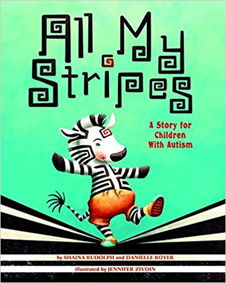 Amazon Review: The book will help those without autism to understand and accept the differences in others. It teaches us to embrace not only who we are, but also to embrace the people around us who are brilliantly different thanks to their own amazing, colorful stripes. Shaina Rudolph and Danielle Royer have done a magnificent job shedding light on some of the hardships a child with autism goes through. Beyond this, they’ve done an equally impressive job detailing how unique, beautiful, and caring these children are. Zane is a hero in my eyes, just like each and every child out there dealing with autism. Additionally, Zane s Mama is a wonderful role model for parents and teachers and exemplifies a favorite quote of mine: ‘With great love, all things are possible.” All My Stripes is a wonderful book that will delight children and parents alike. Entertaining, enjoyable, and enlightening.
Amazon Review: The book will help those without autism to understand and accept the differences in others. It teaches us to embrace not only who we are, but also to embrace the people around us who are brilliantly different thanks to their own amazing, colorful stripes. Shaina Rudolph and Danielle Royer have done a magnificent job shedding light on some of the hardships a child with autism goes through. Beyond this, they’ve done an equally impressive job detailing how unique, beautiful, and caring these children are. Zane is a hero in my eyes, just like each and every child out there dealing with autism. Additionally, Zane s Mama is a wonderful role model for parents and teachers and exemplifies a favorite quote of mine: ‘With great love, all things are possible.” All My Stripes is a wonderful book that will delight children and parents alike. Entertaining, enjoyable, and enlightening.
The Survival Guide for Kids with Autism Spectrum Disorders (And Their Parents)
By Elizabeth Verkick and Elizabeth Reeve
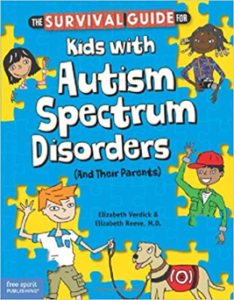 Amazon Review: This positive, straightforward book offers kids with autism spectrum disorders (ASDs) their own comprehensive resource for both understanding their condition and finding tools to cope with the challenges they face every day. Some children with ASDs are gifted; others struggle academically. Some are more introverted, while others try to be social. Some get “stuck” on things, have limited interests, or experience repeated motor movements like flapping or pacing (“stims”). The Survival Guide for Kids with Autism Spectrum Disorders covers all of these areas, with an emphasis on helping children gain new self-understanding and self-acceptance. Meant to be read with a parent, the book addresses questions (“What’s an ASD?” “Why me?”) and provides strategies for communicating, making and keeping friends, and succeeding in school. Body and brain basics highlight symptom management, exercise, diet, hygiene, relaxation, sleep, and toileting. Emphasis is placed on helping kids handle intense emotions and behaviors and get support from family and their team of helpers when needed. The book includes stories from real kids, fact boxes, helpful checklists, resources, and a glossary. Sections for parents offer more detailed information.
Amazon Review: This positive, straightforward book offers kids with autism spectrum disorders (ASDs) their own comprehensive resource for both understanding their condition and finding tools to cope with the challenges they face every day. Some children with ASDs are gifted; others struggle academically. Some are more introverted, while others try to be social. Some get “stuck” on things, have limited interests, or experience repeated motor movements like flapping or pacing (“stims”). The Survival Guide for Kids with Autism Spectrum Disorders covers all of these areas, with an emphasis on helping children gain new self-understanding and self-acceptance. Meant to be read with a parent, the book addresses questions (“What’s an ASD?” “Why me?”) and provides strategies for communicating, making and keeping friends, and succeeding in school. Body and brain basics highlight symptom management, exercise, diet, hygiene, relaxation, sleep, and toileting. Emphasis is placed on helping kids handle intense emotions and behaviors and get support from family and their team of helpers when needed. The book includes stories from real kids, fact boxes, helpful checklists, resources, and a glossary. Sections for parents offer more detailed information.
The Girl Who Thought in Pictures: The Story of Dr. Temple Grandin (Amazing Scientists)
By Julia Finley Mosca and Daniel Rieley
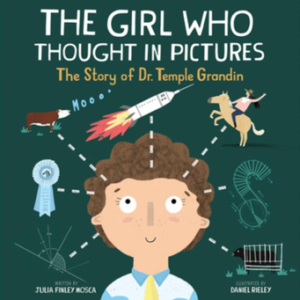 Amazon Review: When young Temple was diagnosed with autism, no one expected her to talk, let alone become one of the most powerful voices in modern science. Yet, the determined visual thinker did just that. Her unique mind allowed her to connect with animals in a special way, helping her invent groundbreaking improvements for farms around the globe!
Amazon Review: When young Temple was diagnosed with autism, no one expected her to talk, let alone become one of the most powerful voices in modern science. Yet, the determined visual thinker did just that. Her unique mind allowed her to connect with animals in a special way, helping her invent groundbreaking improvements for farms around the globe!
The Girl Who Thought in Pictures: The Story of Dr. Temple Grandin is the first book in a brand new educational series about the inspirational lives of amazing scientists. In addition to the illustrated rhyming tale, you’ll find a complete biography, fun facts, a colorful timeline of events, and even a note from Temple herself!
Timothy, the Shooting Star: A Social Story about Autism
By Christie Elam
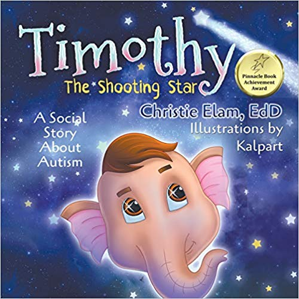 Amazon Review: Loud noises and social situations make Timothy, an elephant with autism, very uncomfortable.
Amazon Review: Loud noises and social situations make Timothy, an elephant with autism, very uncomfortable.
The challenges of autism make him shake his trunk back and forth to soothe his anxiety. This makes others laugh and tease him.
Timothy’s favorite subject, outer space, becomes a way to connect with the other animals in the African Savanna.
One evening, a shooting star changes everything!
Find out how Timothy discovers his own worth and gains the respect of others.
“This story gives a voice to kids who may have a hard time finding their own. Timothy the Elephant gifts autistic children with a better understanding of themselves and others. It also provides caregivers with a helpful tool in getting to know the precious kids with whom they are sharing the story.” – Naomi, proud mom of a son with autism
Resources
Cook, J., & DuFalla, A. (2018). Uniquely Wired: a Story about Autism and Its Gifts. Boys Town, NE: Boys Town Press.
Delaney, T. (2010). 101 Games and activities for children with autism, Aspergers, and sensory processing disorders. New York: McGraw-Hill.
Elam, C. (2018). Timothy, The Shooting Star: a social story about autism. Place of publication not identified: Strategic Book Publishing.
Mosca, J. F., & Rieley, D. (2018). The girl who thought in pictures: the story of Dr. Temple Grandin. New York: Scholastic Inc.
Pascuas, C., & Grant, R. J. (2017). Social Skills Handbook for Autism: Activities to Help Kids Learn Social Skills and Make Friends. Vancouver, BC: Edx Autism Publishing.
Rudolph, S., Royer, D., Zivoin, J., Coman, D. C., & Braaten, E. (2015). All my stripes: a story for children with autism. Washington, DC: Magination Press, American Psychological Association.
Thomas, P., & Keay, C. (2014). I See Things Differently: a First Look at Autism. Hauppauge, NY: Barron’s Educational Series Inc.
Verdick, E., Reeve, E., & Kobyluch, N. (2015). The survival guide for kids with autism spectrum disorders (and their parents). United States: Free Spirit Publishing.
Yarborough, L. L., & Merheb, N. (2018). Nathans autism spectrum superpowers. Texas: One Three Nine Inspired.
Receive online class information and helpful tips from Dr. Randy Kulman's LearningWorks for Kids |
